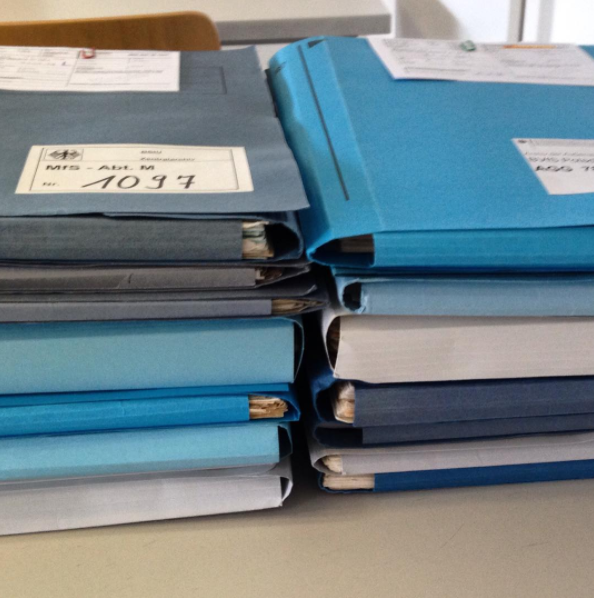In the early years of the Department M, or Division VI as it was known at the time, there was no vocational training so the few dozen employees had to conceive of their own workflows. At that time, the standard set for workers who examined the contents of mail was to read “500 letters per person for each working hour.” Post control took place in special rooms of selected central post offices, where employees of Division VI covertly intercepted and opened mail. The onsite locations helped to ensure the Stasi could accumulate as much intelligence as possible while causing the lowest acceptable delay in the Paketstrom (English: packet stream). (Labrenz-Weiß, 13)
By 1952 Department M was established and locations for inspection were formalized. The five GDR states (see previous blog post) were divided into 14 districts in order to increase efficiency by moving postal control structurally closer to sender and receiver. Various statutes were established by the MfS allowing for inspection of the post in order to prevent sedition inspired by western influence, as well as to carry out censorship through interception of materials. The process for post control was also more precisely defined and subdivided into specific working groups for: 1) Sorting mail by size; 2) Technical processing; 3) Readers; 4) Writers; and 5) Employees at the lamp.
Units responsible for “Sorting” the mail passed any letters or parcels that appeared suspicious, as well as all mail destined for persons or organizations under postal control, to “Technical processing” where it was opened using steam or other nondestructive methods. It was then sent to “Readers” who sent letters to the “Writers” once it was determined the contents were worthy of being transcribed. The Writers had the job of recording the documents, preparing reports for each day, and passing information with clues for espionage, sabotage, or, after the addition of the Berlin wall, plans for escape, to relevant departments.
“The work on the lamp” investigated suspicious consignments in a dark room under a quartz lamp in order to identify clandestine forms of communication like secret writing on the surface of paper, or other methods including invisible ink. If found these documents were then passed to the OTS, or Operational-Technical Sector of the MfS, for special investigation.
These early divisions of labor served to increase efficiency much in the same way Henry Ford had done at the beginning of the century when he introduced the assembly line. Equally, the divisions helped Stasi employees to become more knowledgeable and specialized in their work, eventually developing machines to augment, improve, and speed up their tasks. (Labrenz-Weiß, 16–17)
- Hanna Labrenz-Weiß, Abteilung M (MfS Handbuch). Hg. BStU. Berlin 2005.




